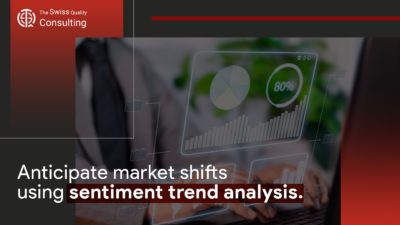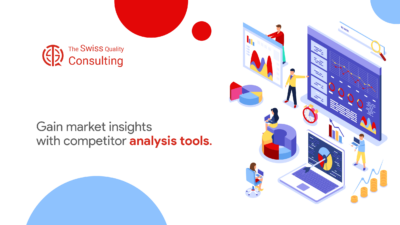Leveraging Predictive Analysis to Thrive in Dynamic Markets
In today’s fast-paced and ever-changing business landscape, the ability to adapt and make informed decisions is crucial for success. As the saying goes, “Navigate market dynamics with predictive analysis.” This quote underscores the significance of using predictive analysis as a strategic tool to guide businesses through the challenges and uncertainties of the market. In this article, we will explore the concept of predictive analysis, its role in change management, and how it empowers executives, managers, and entrepreneurs to navigate market dynamics effectively.
Introduction
Market dynamics are constantly evolving, influenced by a multitude of factors, including economic conditions, consumer behavior, technological advancements, and global events. Businesses that can anticipate these changes and adjust their strategies accordingly are better positioned to succeed. This is where predictive analysis comes into play.
What is Predictive Analysis?
Predictive analysis is the process of using historical data, statistical algorithms, and machine learning techniques to identify future trends and make informed predictions. It enables organizations to move beyond reactive decision-making and embrace a proactive approach to addressing market dynamics.
The Role of Predictive Analysis in Change Management
Change management is the systematic approach to dealing with change in an organization. It involves planning, executing, and monitoring change processes to ensure they are smooth and meet their objectives. Predictive analysis plays a pivotal role in change management in the following ways:
1. Anticipating Market Shifts:
By analyzing historical data and market trends, predictive analysis can help businesses anticipate shifts in consumer preferences, industry regulations, and competitive landscapes. This foresight allows organizations to proactively plan and implement changes to stay ahead.
2. Identifying Risks and Opportunities:
Predictive analysis can identify potential risks and opportunities that may arise as a result of market dynamics. This information empowers businesses to mitigate risks and seize opportunities before they become critical.
3. Optimizing Resource Allocation:
Change management often involves reallocating resources to adapt to new circumstances. Predictive analysis helps organizations allocate resources efficiently by providing insights into where they will have the most impact.
Examples of Predictive Analysis in Action
Let’s explore a few real-world examples of how predictive analysis has been used effectively in different industries:
1. Retail: Inventory Management
Retailers use predictive analysis to forecast demand for products accurately. By analyzing historical sales data, seasonal patterns, and external factors like weather and holidays, they can optimize inventory levels and reduce carrying costs.
2. Finance: Credit Scoring
Financial institutions employ predictive analysis to assess credit risk. By analyzing an applicant’s credit history, income, and other relevant data, they can predict the likelihood of repayment and make informed lending decisions.
3. Healthcare: Disease Prevention
Healthcare organizations use predictive analysis to identify individuals at higher risk of certain diseases based on factors like genetics, lifestyle, and medical history. This information enables proactive preventive measures.
4. Manufacturing: Predictive Maintenance
Manufacturers use predictive analysis to monitor the condition of machinery and equipment in real-time. By analyzing sensor data and performance metrics, they can predict when maintenance is needed, reducing downtime and increasing efficiency.
Navigating Market Dynamics with Predictive Analysis
As businesses operate in an increasingly competitive and volatile environment, the need for predictive analysis becomes more apparent. Here’s how executives, managers, and entrepreneurs can harness the power of predictive analysis to navigate market dynamics successfully:
1. Data Collection and Integration:
Start by collecting relevant data from various sources within your organization. This includes sales data, customer feedback, market research, and any other information that can provide insights into market dynamics.
2. Data Analysis:
Employ data analytics tools and techniques to analyze the collected data. Look for patterns, trends, and correlations that can help in understanding market dynamics.
3. Machine Learning and Predictive Models:
Implement machine learning algorithms and predictive models to forecast future market conditions. These models can predict consumer behavior, market trends, and potential disruptions.
4. Continuous Monitoring:
Market dynamics are not static; they evolve over time. Implement a system for continuous monitoring and updates to your predictive models to ensure their accuracy and relevance.
5. Strategic Decision-Making:
Use the insights gained from predictive analysis to inform strategic decision-making. This may involve adjusting marketing strategies, product development, pricing, or resource allocation.
6. Risk Mitigation:
Identify potential risks that may arise due to market dynamics and develop risk mitigation strategies. Having a plan in place to address unexpected challenges is essential for business resilience.
7. Agility and Adaptability:
Finally, embrace an agile and adaptable organizational culture. Being open to change and quick to respond to market shifts is a fundamental aspect of navigating market dynamics successfully.
Conclusion
In conclusion, the quote “Navigate market dynamics with predictive analysis” encapsulates the essence of modern business strategy. Predictive analysis empowers businesses to anticipate, adapt, and thrive in a constantly changing market. By leveraging the power of predictive analysis, business executives, mid-level managers, and entrepreneurs can make informed decisions, mitigate risks, and seize opportunities, ultimately ensuring their organization’s success in today’s dynamic business landscape.
#PredictiveAnalysis #MarketDynamics #ChangeManagement #BusinessStrategy























